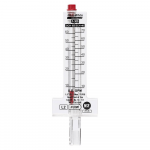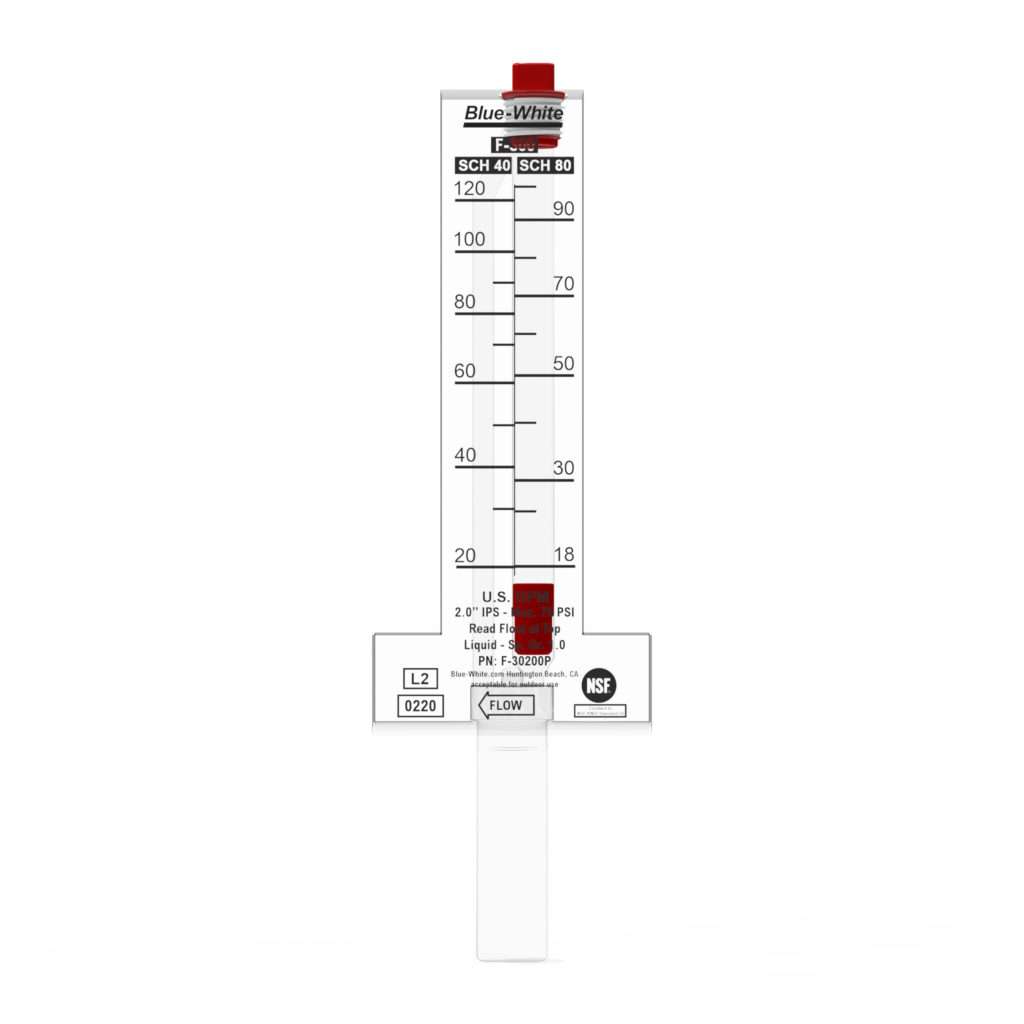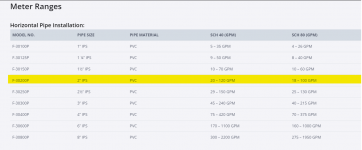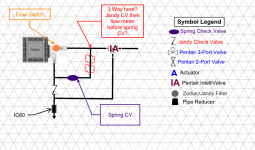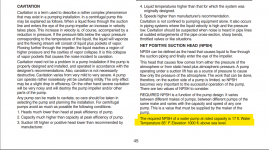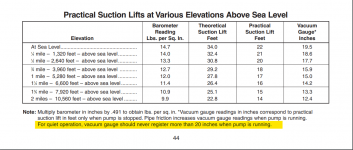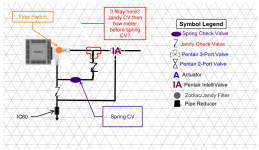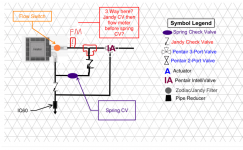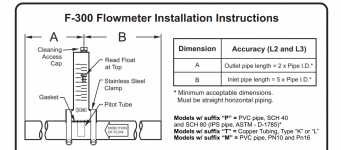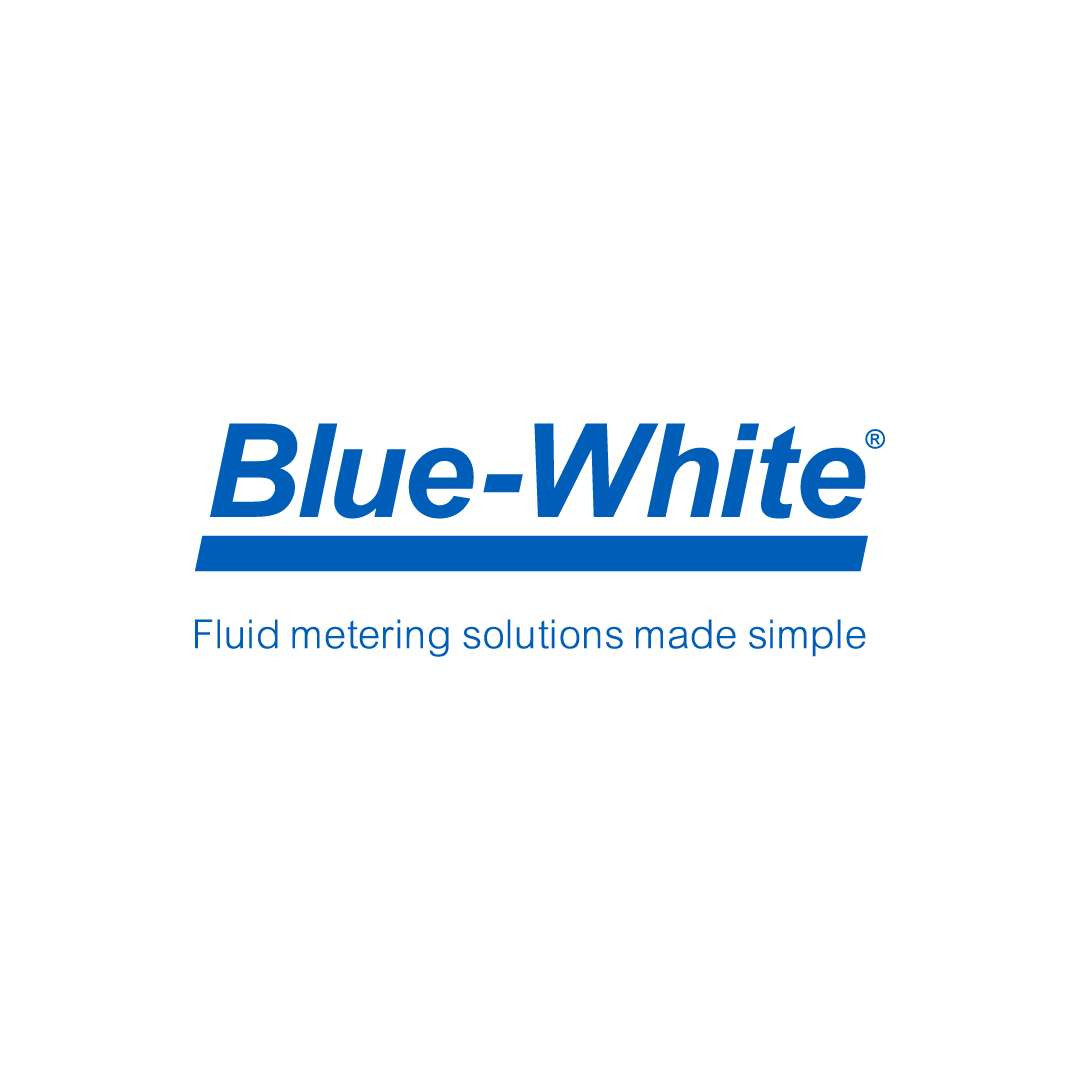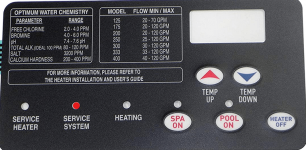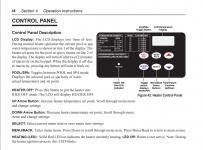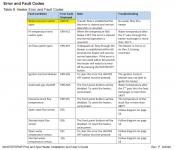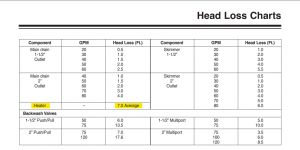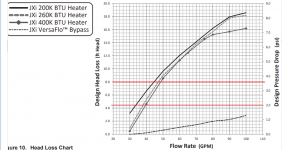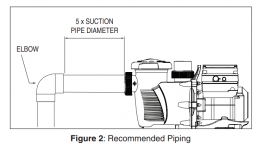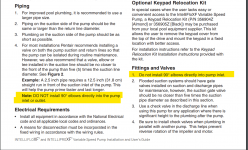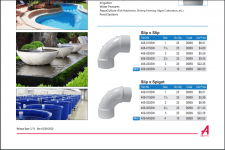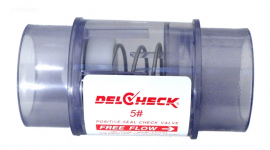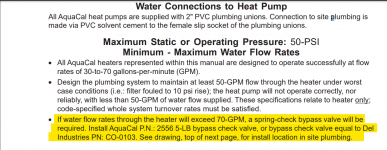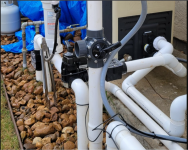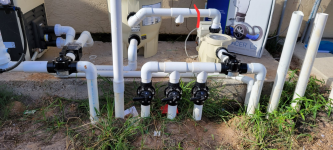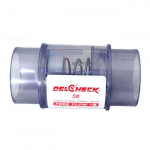Think about it like this, if you have a variable speed pump sending water to a heater and there is a pressure gauge before and after the heater and you begin to send flow through the heater, the head loss curve shows the pressure differential expected at every flow rate.
GPM...........Pressure differential
30...................0.2167 psi
40...................2.0 psi
48...................3.5 psi
50...................3.7 psi
58...................5.0 psi
60...................5.2 psi
70...................6.3 psi
80...................6.8 psi.
Since the bypass is in parallel, the pressure differential is the same for the check valve and the heater regardless of the pressure elsewhere in the system.
The check valve rating is where it begins to open.
So, a 3.5 lb check valve begins to open at 3.5 lb (psi), which means that the check valve remains closed until the flow going through the heater gets to 48 GPM and the pressure hits 3.5 PSI.
You can choose the flow where the bypass opens based on the spring tension.
If you wanted 58 GPM, you would choose a 5 lb spring etc.
1095-20 - VALVE, CHECK, 2 IN, 5 LB SPRING (1095-20)

www.inyopools.com
PART # 9431A
MANUFACTURER CODE 1095-20
ALTERNATE PART #'S 109520, 26-350-1002
Product Description
INYO # 9431A FLO CONTROL # 1095-20 GENERAL DESCRIPTION: THIS IS A BYPASS CHECK VALVE THIS IS NOT USED TO PREVENT BACKFLOW LIKE MOST CHECK VALVES THIS IS USED TO ALLOW WATER TO GO AROUND A FILTER OR OTHER EQUIPMENT BY GOING THRU ANOTHER PLUMBING PATH THAT MEETS THE FILTER PLUMBING PATH DOWNSTREAM VALVE TYPE: SPRING OR SWING SPRING TYPE SPRING STRENGTH: 5 LBS. OPENS AT 5 LBS PRESSURE AND IS FULLY OPEN AT 17 LBS OF PRESSURE MATERIAL: WHITE SCHEDULE 40 PVC PIPING CONNECTIONS: 2" SLIP (ACTUAL INSIDE DIAMETER IS 2-3/8" FOR 2" SLIP) DEPTH OF PLUMBING CONNECTION: 1-3/8" (THIS IS HOW FAR THE PIPE WILL EXTEND INTO THE 2" SLIP) TOTAL LENGTH: 5" MAXIMUM OUTSIDE DIAMETER: 2-3/4"
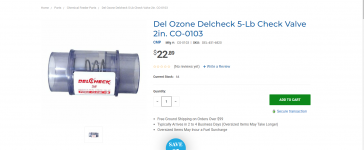
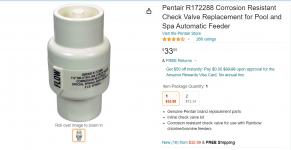
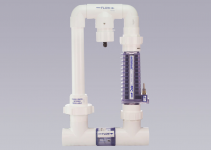
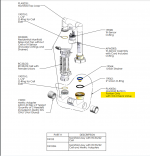

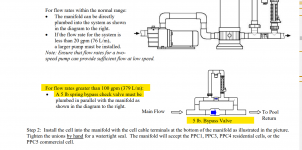

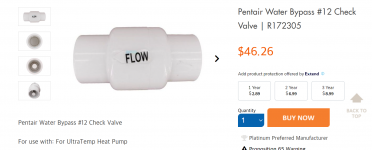
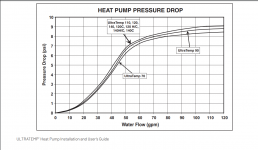
Check Valve – The check valve in the Manifold allows all water flowing through the plumbing at a rate greater than 20 gallons per minute to by-pass the production cell to maximize the production of chlorine.
AutoPilot’s patented Bypass Manifold is a pre-assembled unit designed to control the flow rate delivered to our cell. The spring check valve in the manifold allows excess flow, over 20 gpm, to bypass the cell.
39 R172305 WATER BYPASS CHECK VALVE
You can see the same design in the Autopilot that uses a 3 or 5 lb spring and the Pentair Ultratemp that uses a 12 lb spring.
The 12 lb spring makes no sense because the pressure never gets to 12 PSI based on the head loss diagram.
A 5 lb to 7 lb check valve would make sense, but not 12 lb.


